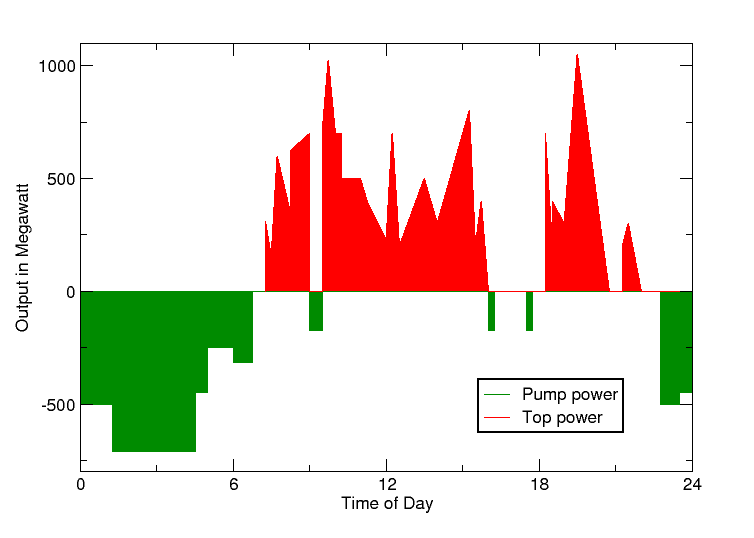What is the Most Efficient Way to Store Energy?

A reader recently wrote in asking me to talk about the most efficient way to store energy. He was probably expecting some discussion on batteries or flywheel contraptions. The unexpected answer is that if you're looking for the best efficiency (least losses), you'll find no better apparatus than storing excess energy via water.
What?
You heard right. Water. As most readers know, one of the best power generation techniques is hydroelectric power. Other than being geographically limited, you'd be hard-pressed to find a better source of power than using the flow of water to move a turbine on a generator. It's just using gravity without any required human input short of building the thing. For pumped-hydro storage, you can even cut your moving parts in half by reusing your pump impeller as your turbine blades.
How does that relate to energy storage?
Consider this: During one period, most people sleep without major power-consuming loads running. During another period, everyone is awake and using the air conditioner. Which period will have the higher electricity costs?

This shows the typical usage of a pumped-hydro storage plant. Note that water is pumped during the night while it is used o generate electricity during the day for this particular plant.
When there is excess capability on the grid, some power utilities have begun pumping water into reservoirs to act as a battery. During peak times when electricity is much more expensive, they release the water to flow through hydroelectric turbines to produce more electricity.
These systems can be even more efficient using non-base load power distribution systems like solar cells. The solar cells could power water pumps throughout the day when few people use heating systems to augment the power grid at night whenever large heater banks are being turned on across the grid to keep warm. By maintaining excess energy available in hydro-storage, power companies don't have to spin up rapid-load-response generators, which are usually expensive gas-fired turbines.
What makes this system so efficient?
Though the mechanical losses from pumping water around are about the same as the chemical losses from storing energy in a battery, this is offset by the extremely low comparable operating costs for the storage potential gained. To increase your storage capacity for pumped storage, you dig a bigger reservoir. Increasing your storage capacity for a battery bank would require building and purchasing massive expansions to your battery bank. Considering the relative storage potential of a battery, this is a poor financial decision.
Ultimately, the efficiency of this system is financial rather than physical. The rest of the world agrees, as 99% of mass energy storage comes from hydro-storage.
Dispatching power to increase cost-effectiveness is an entire career field unto itself. If you want to do something like this, consider researching NERC certification. All across the country, power dispatchers ensure that the right power plant operates at the right level to produce the cheapest electricity for most people. By incorporating innovative techniques like those discussed above, we can develop a more sustainable energy economy.
Graph credit: Rheinisch-Westflisches Elektrizittswerk RWE Germany used under GNU Free Documentation License.




Member discussion